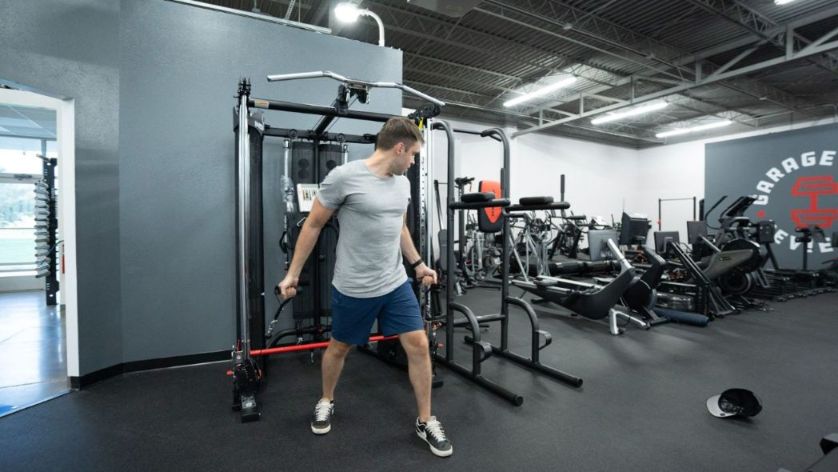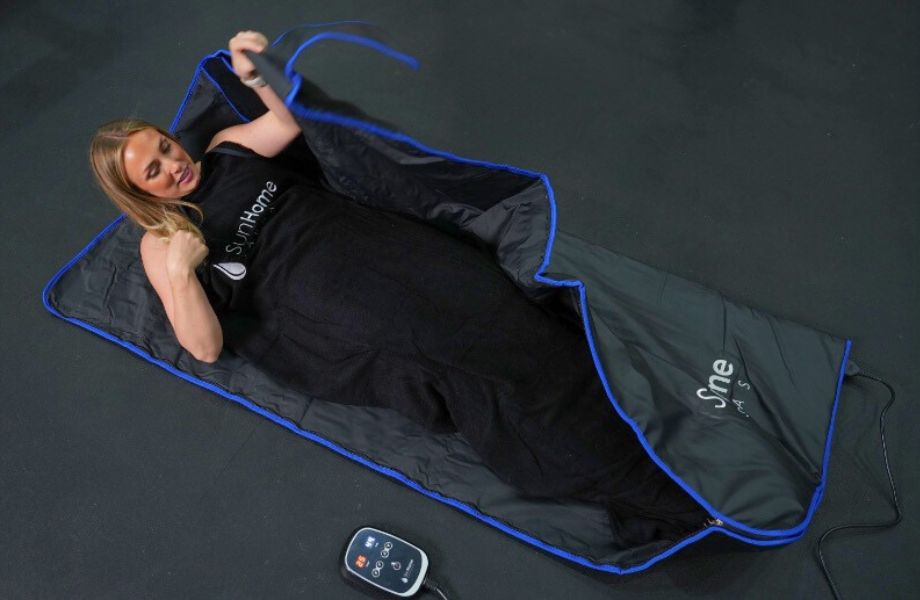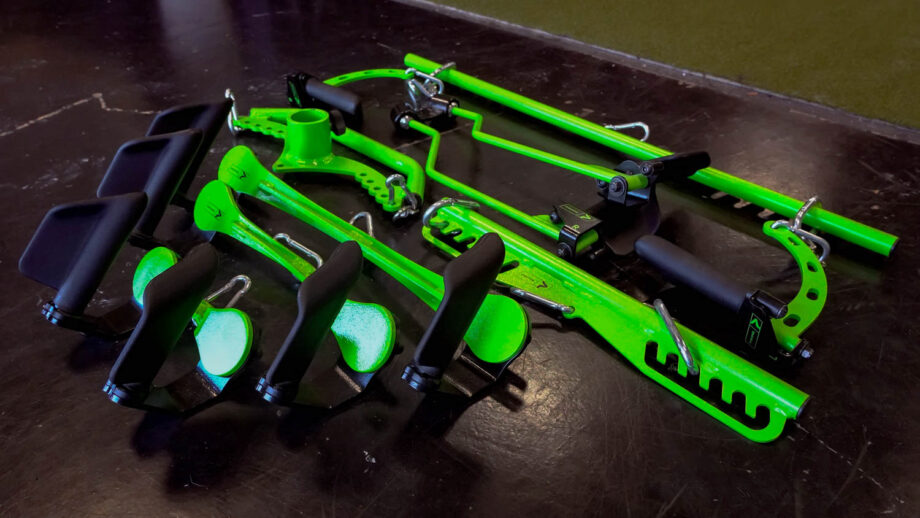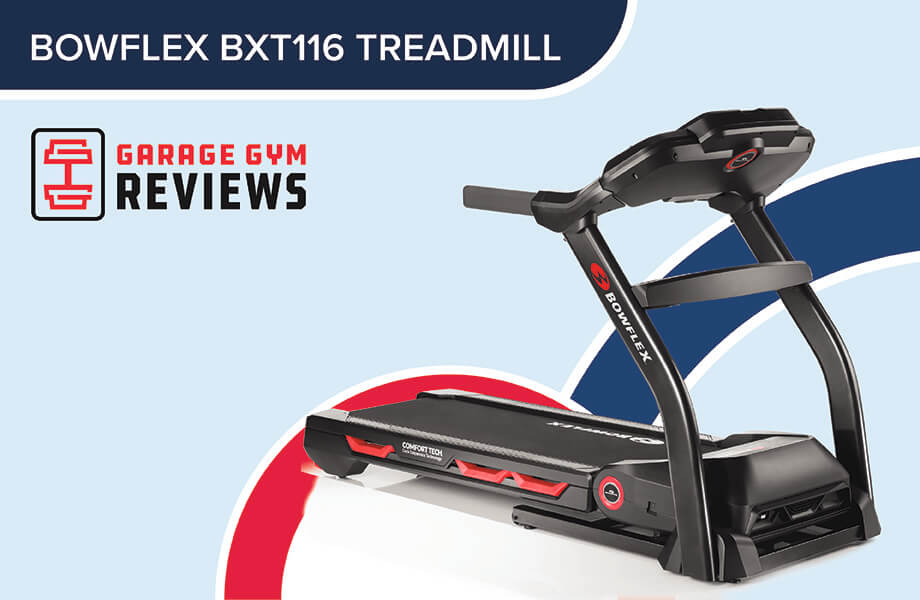“Get a grip” is a common phrase that has to do with keeping cool, calm, and collected rather than holding onto something tighter. However, in the world of health and fitness, the idea of a firm grasp has both mental and physical applications. After all, you must remain laser-focused on your technique to avoid injuries and maximize the returns on your weightlifting efforts. At the same time, you need to maintain complete control of whatever vessel you choose to use to increase strength and pack on muscle.
While the best lifting straps can help keep things secured, they don’t necessarily help you develop stronger forearm muscles or a stronger grip. Luckily, there’s an affordable tool you can add to your arsenal that’s specifically designed for this purpose: grip strengtheners.
RELATED: Grip Strength Exercises
If you’ve never picked up (let alone squeezed) one of these devices before, you may be surprised at just how effective they can be at making you a better lifter. Even as a certified personal trainer (CPT) and longtime rugby player, I’ll admit I overlooked this underrated piece of equipment for far too long. Now that I’m a little older, wiser, and open to expanding my training routine, I can shed some well-deserved light on how to use grip strengtheners to enhance your performance.
So, whether you want to become more proficient at powerlifting, set yourself up for more success at strongman events, or develop a strong grip to make everyday activities just a little easier, the answers are right at the tips of your fingers.
What Is a Grip Strengthener?
A hand grip strengthener is a tool used to—you guessed it—enhance your gripping ability. This inexpensive training device isolates your forearm and hand muscles, allowing you to improve your forearm and wrist strength, dexterity, and even alleviate stress.
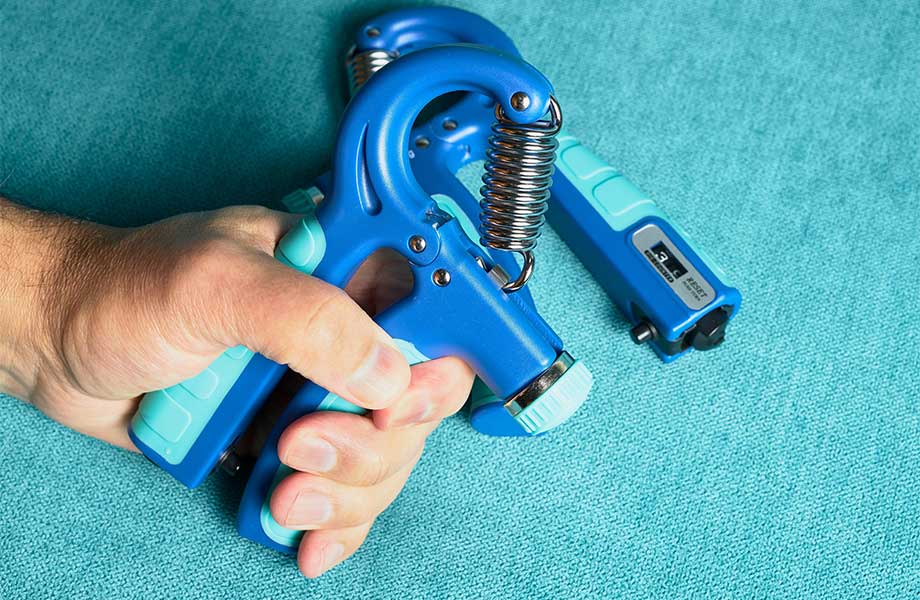
As is the case with many types of fitness equipment, grip strengtheners come in all shapes, sizes, and resistance levels. For example, Rogue Fitness offers 10 options with its IronMind’s Captains of Crush Grippers line, with the lightest model offering 60 pounds of resistance. While that’s ideal for beginners, warm-ups, and physical therapy/rehabilitation, it’s certainly not enough for serious powerlifters who want to crush 600-pound deadlifts. Those folks can go with the Captains of Crush No. 4 model, which provides a whopping 365 pounds of resistance!
Here’s a quick overview of the most popular styles you’ll see on Amazon or in your local sports equipment store:
- Stress balls: The simplest and most recognizable type of hand-strengthening device is something you’ll see on many work desks around the world. While they don’t provide maximum resistance, stress balls can be a useful avenue for channeling any worries and anxiety.
- Grip training ring: Fits in your hand with ridges made for easy, natural finger placement.
- Coil-style gripper: Typically made of aluminum or alloy steel with knurled handles, this type of grip strengthener features a coil at the head that provides resistance when you squeeze. A coil-style gripper is best suited for training crushing grip strength.
- Adjustable hand gripper: Features ergonomic handles and an adjustable knob that allows you to increase or decrease the resistance.
- Articulated grip strengthener: A useful tool for baseball and softball players as well as outdoor enthusiasts, this type of hand gripper emphasizes individual finger strength.
RELATED: What Is Barbell Knurling?
What Are the Different Types of Grip Strength?
Just like we have different types of muscle fibers, we have different types of hand strength. In fact, there are three ways to assess grip strength:
- Crush strength: The ability to clench your hand into a fist, such as when you squeeze your hand around a barbell to set up for a bench press.
- Support strength: The ability to hold onto an object for an extended period of time, such as carrying dumbbells during a farmer’s carry.
- Pinch strength: The ability to squeeze something between the tips of your fingers and your thumb. Pinch grip strength doesn’t apply often in the fitness context.
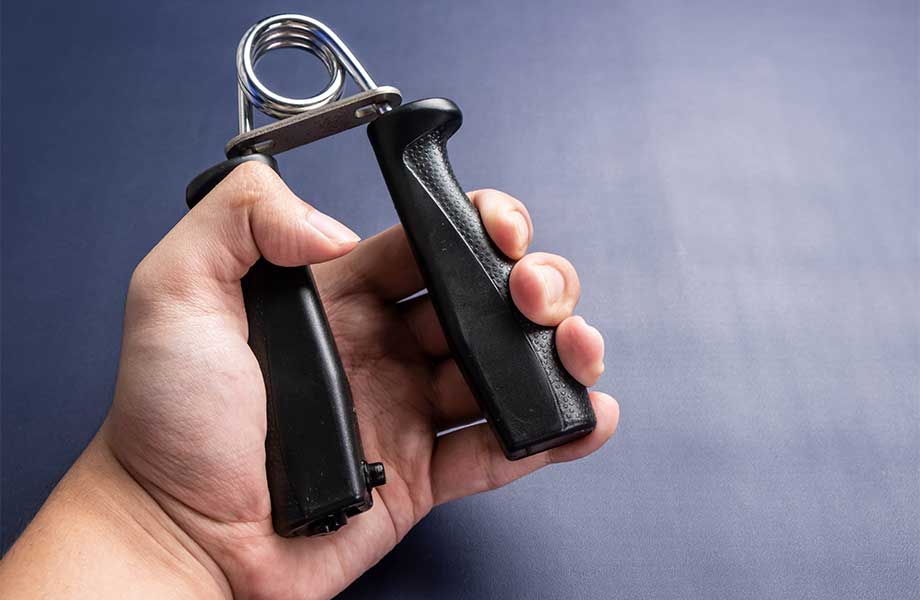
RELATED: Types of Strength Training
How to Use Grip Strengtheners
Now that you’re armed with some knowledge about what grip strengtheners are, let’s dive into how to use them. For the purposes of this article, I’ll break down the steps involved for making maximum #gains using a coil-style hand-strengthening device like the Captains of Crush Gripper.
1. Hold the Handle at a 45-Degree Angle In Your Palm
Position the bottom handle at a 45-degree angle so your pinky can get in on the closing action. The biggest key here is to avoid having the handle point completely horizontal, as this will make it much more challenging for your smallest finger to get involved.
2. Position the Top Handle Just Above Your Thumb
Rather than placing the device directly on your thumb, make sure the top handle is just above the base of your stubbiest digit. Your thumb is a critical piece of the squeezing puzzle, as it helps initiate the movement.
3. Keep Your Other Fingers As Low As Possible
Don’t make the mistake of “choking up” on the gripper. Instead, place your pinky, ring, middle, and index fingers as low on the top handle as possible. In fact, you can even let a portion of your pinky finger hang off the end of the gripper.
4. Minimize the Space Between Your Fingers
There should be no separation between your fingers. (If they’re tight, they’re right!) Keep those fantastic four together to create maximum tension through your entire hand. This strategy will allow you to activate the muscles around your fingers and knuckles, giving you the most squeezing power.
5. Squeeze Until the Handles Touch
While partial reps are acceptable in some cases, I wouldn’t recommend that approach with grip strengthening. Make every rep count by making sure the handles touch together. Emphasizing both the eccentric and concentric portions—aka using a full range of motion—of hand gripper exercises will give you the most bang for your buck.
RELATED: How to Use a Massage Gun
Benefits of Grip Strength Exercises
It’s no secret that hand grip strength has a major impact on everything from your ability to open a new container of your favorite protein powder to holding your luggage as you walk through the airport. From a health and fitness perspective, grip strength is essential for executing clean barbell deadlifts, holding onto dumbbells for farmer’s walks, or staying attached to the best pull-up bar.
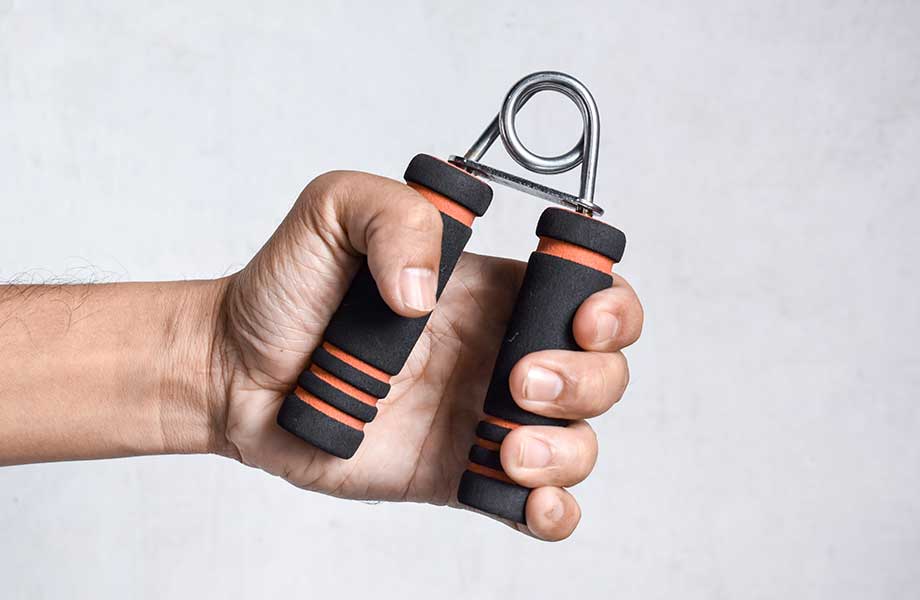
Below, I’ll break down the different benefits of using hand grippers or similar tools to enhance the muscles in your hand, wrist, and forearm.
Can Enhance Your Wrist and Forearm Strength
Using hand grippers consistently can pay big dividends for your wrist and forearm strength. A study in the Journal of Strength and Conditioning Research1 examined the effect of 12 weeks of wrist and forearm training on male high school baseball players. The results showed that a periodized training program can significantly increase wrist, forearm, parallel squat, and bench press strength.
Can Help Improve Your Weight Training Performance
Grip strength (or lack thereof) can affect your ability to hold onto a pull-up bar and squeeze out a few more reps. It can also impact your ability to maintain control of a barbell as you go into hip extension during a deadlift.
Although they may not be the most exciting form of training, grip exercises can put you on a path to becoming a better lifter and overall athlete. In addition to the strength gains, you may also develop more confidence—an underrated component of crushing a gym session—simply by knowing you can handle heavy loads.
Can Help Address Tendonitis Issues
Wrist and forearm tendonitis can be debilitating, leaving you in pain and making normal activities (let alone lifting weights) especially uncomfortable. Luckily, you can use hand grip exercises to help counteract this issue and get your flexor muscles back in optimal shape.
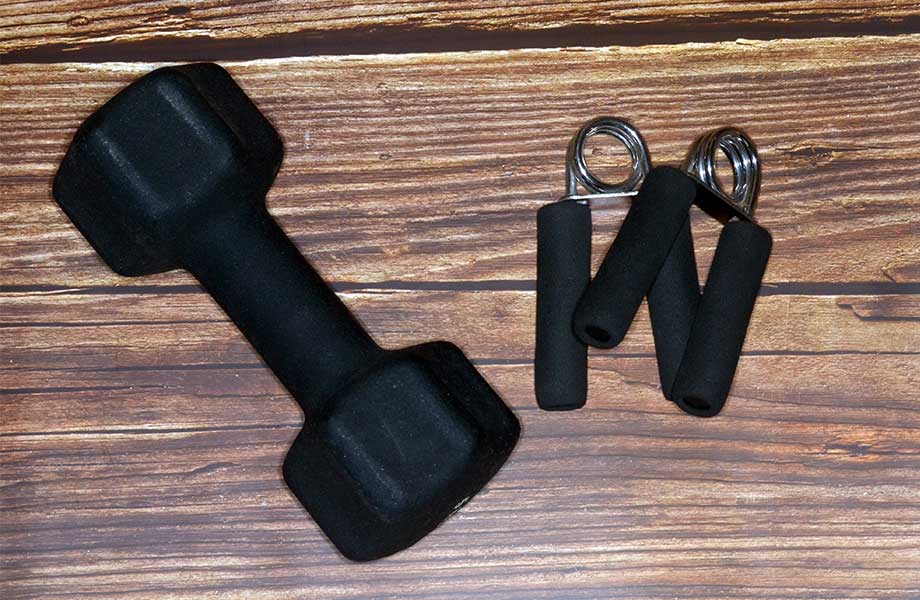
While evidence of the efficacy of this form of therapy is limited, a 2023 systematic review in the Journal of Hand Therapy2 found some studies reported an improvement in pain and functionality. However, more research must be done to determine just how effective exercise therapy is in treating hand and wrist tendinopathies.
Can Help Alleviate Stress
There’s a reason many people keep a stress ball nearby—they actually work. While I’ve mostly focused on the physical benefits of grip workouts, it’s important to note the potential mental health benefits, too. According to a 2023 study in Hemodialysis International3, the use of a stress ball at home for four weeks significantly decreased anxiety and depression levels in a group of hemodialysis patients.
Having a healthy external outlet to let out some internal struggles can help you maintain a calm mind. Squeezing on a stress ball may not get you amped up like a tough at-home CrossFit workout, but it may provide much-needed relief when you’re stuck at the office.
RELATED: Exercise and Mental Health
How to Use Grip Strengtheners: Final Thoughts
Getting a grip on life can be much more challenging than getting a solid grip on a barbell or pair of dumbbells. However, the idea of maintaining control over your body and mind is essential no matter if you’re in the gym, at work, or anywhere in between.
Think of grip strengtheners as a double-sided tool that provides physical and mental benefits. You can use them to grow bigger, forearms, stable wrists, and stronger hands. You can also use them to channel any stress and worries from your brain into something that’ll positively impact your life.
How to Use Grip Strengtheners: FAQs
What is the best way to use a grip strengthener?
The best way to use a grip strengthener is to start by squeezing in a controlled, steady motion. You should follow progressive overload by gradually increasing the resistance, changing the rep and set schemes, and varying the time under tension by doing isometric holds.
How often should you use a grip strengthener?
As a CPT, I recommend doing hand grip exercises two to three times per week. One session can use higher repetitions and a lower weight. Another can take the opposite approach, which will test your overall strength more than your endurance. Your third session could pair grip strength training with related exercises like pull-ups, weighted carries, or deadlifts.
Why is hand grip strength important?
Hand grip strength is important for maintaining control of equipment during weightlifting sessions. It can also help make daily tasks like carrying groceries or opening and closing containers easier. Hand grip strength has even been linked to your immune health4 and is viewed as a key biomarker for older adults5.
References
- Szymanski DJ, Szymanski JM, Molloy JM, Pascoe DD. Effect of 12 weeks of wrist and forearm training on high school baseball players. J Strength Cond Res. 2004 Aug;18(3):432-40. doi: 10.1519/13703.1. PMID: 15320673.
- Cordella M, Pellicciari L, Scopece F, Fornaro R, Giovannico G, Lanfranchi E. Evidence for exercise therapy in patients with hand and wrist tendinopathy is limited: A systematic review. J Hand Ther. 2023 Oct-Dec;36(4):940-955. doi: 10.1016/j.jht.2023.08.016. Epub 2023 Oct 5. PMID: 37802688.
- Ozen N, Berse S, Tosun B. Effects of using a stress ball on anxiety and depression in patients undergoing hemodialysis: A prospective, balanced, single-blind, crossover study. Hemodial Int. 2023 Oct;27(4):411-418. doi: 10.1111/hdi.13102. Epub 2023 Jun 15. PMID: 37318078.
- Wu, D., Gao, X., Shi, Y., Wang, H., Wang, W., Li, Y., & Zheng, Z. (2022). Association between Handgrip Strength and the Systemic Immune-Inflammation Index: A Nationwide Study, NHANES 2011–2014. International Journal of Environmental Research and Public Health, 19(20), 13616. https://doi.org/10.3390/ijerph192013616
- Bohannon, R. W. (2019). Grip Strength: An Indispensable Biomarker For Older Adults. Clinical Interventions in Aging, Volume 14, 1681–1691. https://doi.org/10.2147/cia.s194543




